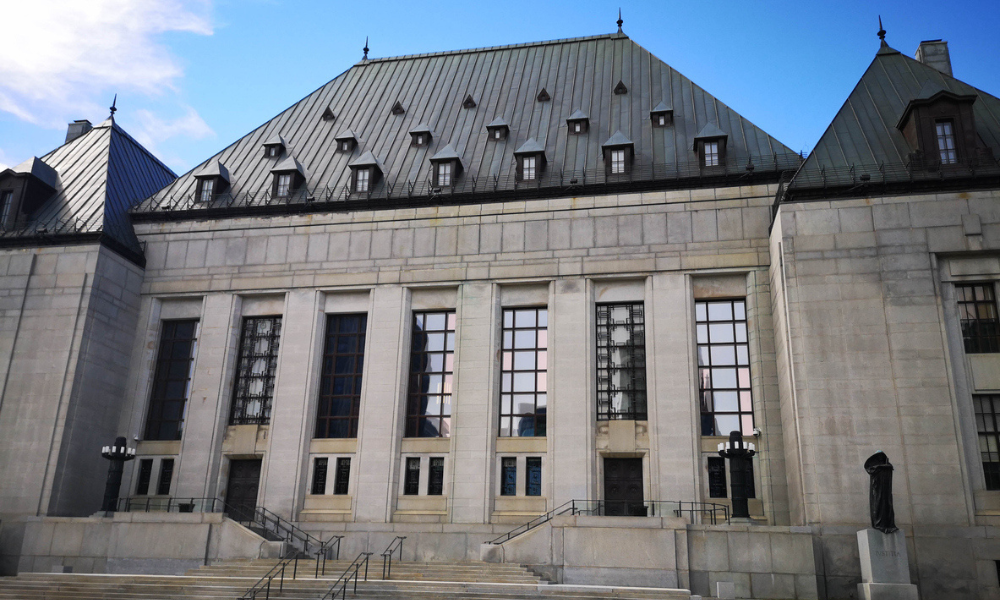The court was concerned with a potential conflict of interest

The Nova Scotia Supreme Court has refused to allow a former barrister to represent his wife in a personal injury lawsuit.
The dispute in Jordan v. Fenwick Holdings Limited, 2023 NSSC 290 began when Margaret Jordan slipped and fell outside the Fenwick Medical Center. As a result of the injuries that she suffered, she commenced a personal injury lawsuit. Her notice of action and statement of claim bore the signature of her husband, William Jordan, who appeared to be the plaintiff's lawyer and legal representative.
William is a former Nova Scotia Barristers Society member, but he had not been practising since resigning his membership in 2010. Before resigning, William was under disciplinary suspension and was not permitted to practice law in the province.
The defendant in the action, Fenwick Holdings Limited, motioned to remove William as Margaret's representative. Fenwick argued that William was in a conflict of interest and could not represent Margaret. Fenwick also asserted that as William is the plaintiff's husband, he has a financial interest in the outcome of the litigation. He was also a fact witness to the plaintiff's fall, and consequently, he will have made observations relevant to the plaintiff's damages claim. Fenwick argued that a lawyer cannot be a witness and counsel in the same proceeding.
The plaintiff, Margaret, argued that William was representing her in a personal or private capacity. She contended that discharging him would deprive her of her choice of counsel and would impose time and monetary penalties on her. She argued that it would be difficult and counterproductive to represent her claim without William's legal training and that hiring outside counsel would be expensive.
The Nova Scotia Supreme Court ultimately ruled that William failed to meet the statutory requirements to be eligible to practise law in the province. The court noted that he resigned from the Society in 2010 and has not been a member since. The court pointed out that even if he was not acting for a fee, he stood to receive indirect compensation, considering that the plaintiff is his wife and any monetary award she might receive would be of joint benefit.
The court further explained that the relationship between William and the plaintiff may give rise to a conflict of interest based on s. 34 of the Code of Conduct, which requires lawyers to avoid conflicts of interest. The Society noted that a conflict may arise when "A lawyer has a sexual or close personal relationship with a client. Such a relationship may conflict with the lawyer's duty to provide objective, disinterested professional advice to the client."
The plaintiff and William have been married since 1974. The court pointed out that they clearly have a close personal relationship, and the plaintiff trusts him to represent her interests.
In addition to the potential conflict based on his relationship with the plaintiff, the court found that Jodan was potentially in a conflict based on his connection to the substantive issues at trial. The court explained that Jordan had recorded observations about the impact of the plaintiff's injuries on many aspects of her health. He had sworn to those observations in an affidavit and recorded extensive detailed observations in a "pain diary." The court emphasized the common law prohibition against allowing a lawyer to appear as a witness while acting as counsel.
After analyzing the relevant factors, the court ultimately ruled that the interests of justice favour adherence to the common law rule against appearing as a witness and acting as counsel. The court was satisfied that there was a risk to the integrity of the legal profession to allow a non-member of the Society to represent the plaintiff in these circumstances.
The court also rejected the plaintiff's contention that she had signed a power of attorney giving her husband authority to act on her behalf concerning her property and financial affairs.
The court wrote in its decision, "Simply because the plaintiff has given Mr. Jordan power of attorney does not mean he can act as her counsel in this action. This court has the inherent power to control its procedures and the guidance of the applicable Civil Procedure Rules."
The court explained that the Rules intend counsel to be independent of the represented party. Furthermore, the Rules also require a party seeking to be appointed as a representative to file a motion requesting an order from the court, but William did not do so. The court highlighted the importance of following procedural steps to ensure efficient and effective litigation.
The court ultimately refused to allow William to act as the plaintiff's representative due to the potential conflict of interest. However, the court acknowledged that William may seek permission from the court to address the court on the plaintiff's behalf, and it would be up to the presiding judge to decide if Jordan should be given such permission.










